Review
Mazda has delivered a very compelling model for user-choosers, providing the technology, performance and drivability of a premium product at the price point of a mainstream model. From a fleet perspective, it’s the most convincing Mazda we’ve driven to date.
Overview
The CX-60 is a pivotal car for Mazda. It’s the brand's first ‘premium’ model, it’s the first to be offered with a plug-in hybrid powertrain and it debuts a variety of new technologies.
It sits above the CX-5 and is the biggest – and most expensive - Mazda currently offered in the UK.
In keeping with its premium-segment intentions, the CX-60 comes with a high level of standard equipment and powerful engines.
The CX-60’s footprint places it as a contender to the BMW X3, Audi Q5 and Volvo XC60, yet pricing starts at less the £45,000, making it the cheapest of the bunch. The top-of-range PHEV version costs £5,000 less than its closest competitor – a base-model Q5 PHEV.
Drivers aren’t getting short-changed either. The CX-60 PHEV packs more punch than both the Audi and the BMW, while its zero-emission capability is on a par.
Alongside the PHEV engine, which is the one most company car drivers are likely to opt for, a six-cylinder diesel is offered.
Comfort and practicality
There’s an impressive amount of space inside the CX-60, particularly for front-seat passengers. The centre console is wider than normal, pushing the front seats further apart and making room for a huge armrest.
In the rear, there’s ample space for two adults and three at a push. Rear legroom is not class leading and the way the rear wheel arches cut into the door opening can make getting in and out a little harder than in some other SUVs.

The boot volume is among the best in class, at 570 litres and isn’t affected if you opt for the PHEV.
We found the interior of the CX-60 to be one of its best attributes, with high quality materials, decent switchgear and plenty of storage compartments. In this regard, the car certainly lives up to its premium billing.
There is one major flaw with the CX-60, however, and that is its low-speed ride. When driving around town, on potholed streets, or over speedbumps, the car is far to firm. It jostles occupants around with unnecessary harshness. Thankfully, at higher speeds, the suspension eventually settles and the car becomes much smoother.
Safety and technology
The CX-60 achieves top marks in Euro NCAP’s safety tests and comes with a wide range of standard-fit driver assistance systems.
Among the key systems are adaptive cruise control and lane keep assist. There’s also blind spot monitoring, a 360-degree camera system and cross traffic collision avoidance.
It’s possible to tailor the intensity of the many systems, which can include visual and audible alerts as well as physical interventions, where the car will steer or brake automatically if thinks you’re about to have a collision.
We found some of the systems to be a little too sensitive. For example, when joining a busy roundabout or merging between other cars in traffic, the car will ping up unnecessary warnings. The lane keep assist is also quite aggressive, if you stray over the lane markings, which can be annoying on county lanes.
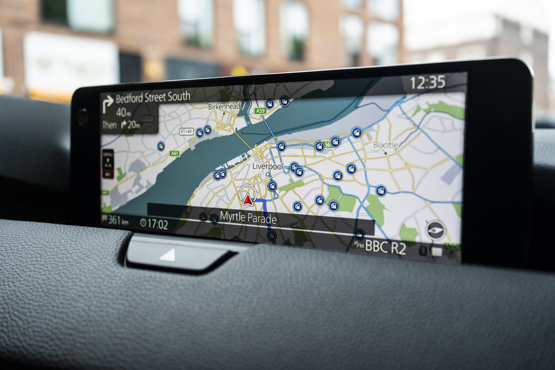
More positively, there’s a large 12.3-inch infotainment screen that has a minimalist layout for simple use. A rotary controller on the centre console makes the system a breeze to use. You’ll also find a volume knob and some shortcut keys to access key functions.
The digital instrument cluster is clear and concise, although the trip computer is a little complex to navigate.
One of the headline technical highlights of the new model is a driver identification system, which uses a camera in the dashboard to work out who’s behind the wheel and automatically adjusts the seats, radio and climate control to suit their preference. The system can also identify signs of fatigue and recommend a rest stop.
Drivability and efficiency
Mazda has made a name for itself as a producer of driver-focused cars and the CX-60 is no exception. It offers impressive drivability, with well-calibrated controls. The brakes are sharp and easy to modulate and the steering provides direct and agile handling.
The CX-60’s suspension has been set-up to minimise body roll and to improve stability. It works. At speed the car feels planted and stable, providing a relaxing driving experience.
As mentioned, the downside of the chassis is the way it tackles rougher roads and bumps at low speed. Push the car a little harder though and those problems become less of an issue. Grip levels are high and the CX-60 likes to take corners like a sporty saloon.
Powering the CX-60 PHEV is a 2.5-litre petrol engine and an electric motor. Drive is delivered to all four wheels and a 17.8kWh battery provides a 39-mile zero-emission range.
The e-Skyactiv X powertrain generates 327PS and 500Nm, funnelled through a new eight-speed automatic gearbox, making it Mazda’s most powerful production car to date. It can accelerate from 0-62mph in just 5.8 seconds.
You can read more about the CX-60 PHEV in our long-term test review, by clicking here.
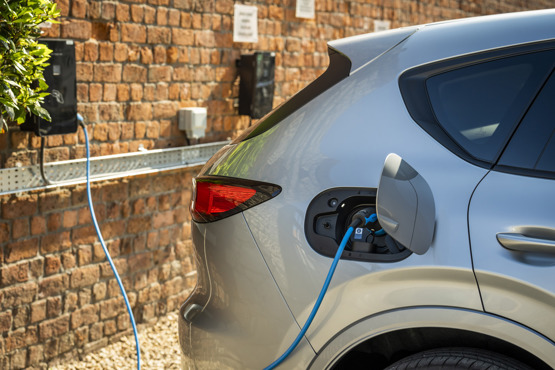
Setting off with a full charge promised a surprising 50 miles of zero-emission driving from the battery and, if used solely around town, its possible the claimed 39-mile figure could be exceeded. Once you hit motorway speeds the range starts to drop off more rapidly and switching from EV mode to petrol power makes more sense. In the CX-60 changing drive mode is simple, choose either Normal, for mixed hybrid driving or Sport to keep the engine running.
After 40 miles of driving at motorway speeds, in Normal mode, our test car was still reporting average fuel consumption of more than 80mpg and carrying a 50% charge.
When the battery depletes to a certain level, the car will automatically begin to function like a hybrid, retaining a small amount of charge for bursts of acceleration or low speed manoeuvring.
The CX-60 diesel uses a new 3.3-litre inline six-cylinder engine with a mild-hybrid system. It’s a fascinating prospect to launch such a vehicle in 2023, but the results are impressive.
Offered in two states of tune – 200PS and 250PS – the CX-60 SkyactivD emits a reassuring diesel glug on startup. While not as rapid as the PHEV, the diesel delivers a satisfying surge of torque and is reasonably frugal. During our test we were averaging 45mpg.
All versions use a smooth-shifting eight-speed automatic transmission.
Company car tax and running costs
With lower P11d values than rivals, the CX-60 is a cost-effective company car choice. The PHEV models make the most sense as they attract 8% benefit-in-kind. HMRC has confirmed that the tax bracket calculation can be made by rounding up the range. As the CX-60 PHEV has an official range of 39.15 miles, it therefore qualifies for the lower tax rate.
The CX-60 diesels are also pretty frugal, emitting from 129g/km and sitting in the 30% tax band.
Running costs for the CX-60 PHEV are lower than rival cars, starting from 42ppm. For comparison, an Audi Q5 50 TFSIe costs from 52ppm.
For the diesel it’s a similar story. The entry-level model costs from 53ppm, while a BMW X3 xDrive20d starts from 58ppm.
There are three trim levels and the CX-60 range starts with the Exclusive Line, which comes with a healthy standard specification including heated leather seats, LED headlights and a reversing camera.
The mid-range Homura gets a Bose speaker system and ventilated front seats. This would be our pick. The Takumi rounds off the range with softer n
Matt has been an automotive journalist for nine years and has driven just about every new car and van that's on sale. As content editor - vehicles he is responsible for the automotive content on Fleet News and also contributes to Automotive Management. Prior to this, Matt worked in the automotive industry for 10 years.


Specs
| Manufacturer | |
| Model | |
| Specification | Mazda Cx-60 Estate 2.5 PHEV Exclusive-Line 5dr Auto |
| Model Year | 2025.00 |
| Annual VED (Road tax) | £110 |
| BIK List Price | £46,475 |
| Range | 39.20mile(s) |
| CO2 | 32g/km |
| BIK Percentage | 13% |
| Insurance Group | N/A |
| CC | 2,488 |
| Fuel Type | |
| Vehicle Type | Medium SUV |
| Luggage capacity (Seats up) | 570litres |
| Doors | 5 |
Running Costs
| P11D | £46,475 |
| Cost per mile | 55.81ppm |
| Residual value | £16,900 |
| Insurance group | N/A |
| Fuel Type | |
| Cost per mile | 214.42ppm |
| Fuel | 3.13ppm |
| Depreciation | 207.55ppm |
| Service maintenance and repair | 3.74ppm |
Info at a glance
-
P11D Price
£46,475
-
MPG
201.8 (WLTP) -
CO2 Emissions
32g/km -
BIK %
13% -
Running cost
3 Year 60k : £16,900 4 Year 80k : £13,775 -
Fuel Type
-
Range
39.20mile(s)

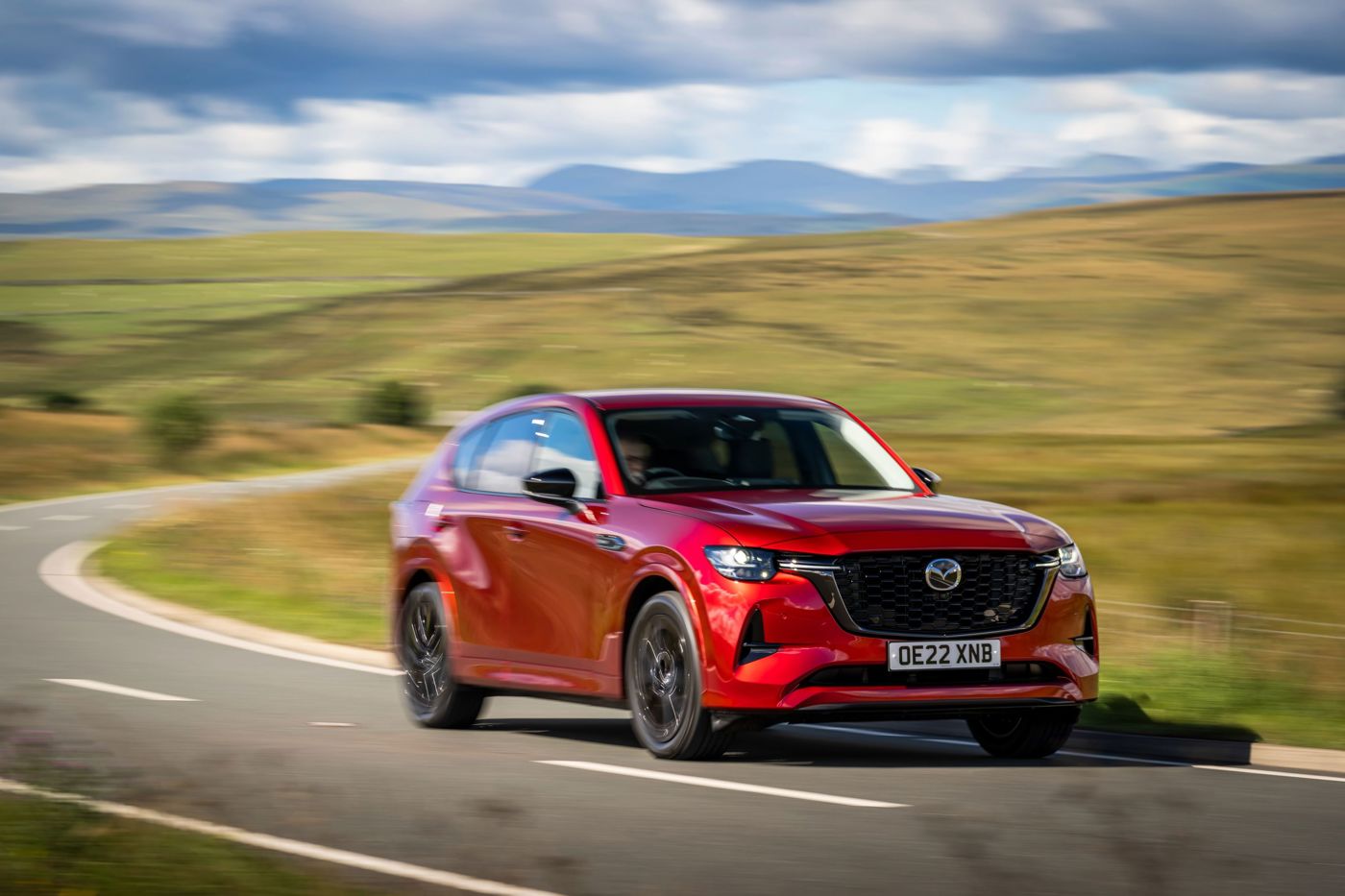
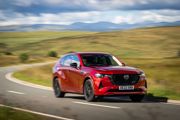


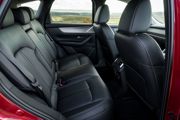
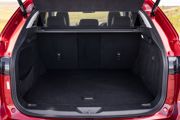



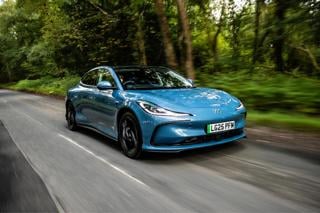













Login to comment
Comments
No comments have been made yet.